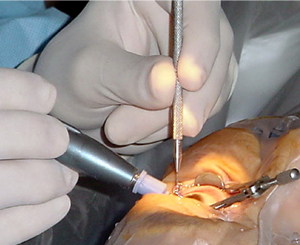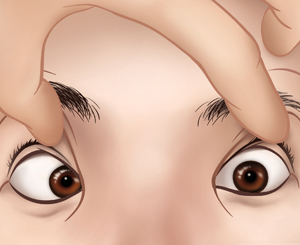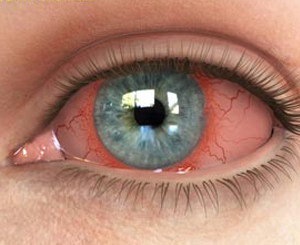What is Glaucoma?
Glaucoma is an eye-related disease which attacks the vision nerve and may be converted in permanent blindness if it is not given timely treatment. In this disease, the nerve fibres are vanished at an enlarged rate and pressure inside the eye is increased. This state can be reason of loss of vision; however this visual loss can be prevented or alleviated by perfect diagnosis and treatment on time. In this disease, optic nerve of eye is damaged and image carries to brain is prescribed as vision. The optic nerve is formed by combination of small nerve fibbers from various parts of retina. When pressure in eyes is gone high normal function of some nerves fibre is stopped which results Glaucoma.
The disorder is known as `sneak thief of sight´ because it does not shows any symptoms and pain. This is the reason person having this disease cannot predict or understand the cause of vision losing. The result can reach at stage of upright of blindness if entire nerve is damaged, only regular treatment can help you preventing from Glaucoma.
Why does Glaucoma develop?
Glaucoma is mostly developed because of eye pressure but not in every person, some people have the capability to tolerate the high pressure than other. An assured stage of pressure can be normal for one but high for other. The possibility of development of Glaucoma depends upon the pressure your eye can tolerate without being damaged. The pressure can be determined by comprehensive dilated eye exam which also help eye care professional to know the level of eye pressure is regular for your eyes.
What magnitude of pressure is regarded as normal for eyes?
The pressure at which no damage is caused to optic nerve is regarded as normal eye pressure. Generally, a pressure of about 17-20 mm of Hg is regarded as normal eye pressure.
Can Glaucoma be developed without increase in pressure inside eyes?
Yes. It can be developed without an increment in eye pressure. This form is known as normal-tension glaucoma or low-tension glaucoma which is a kind of open-angle glaucoma.
Who is at a greater risk of open-angle glaucoma?
Glaucoma can be developed in anyone but most probability in some people which are listed below:
· People of Africa and America whose age is above 40 years.
· People of family having history glaucoma.
· Everyone overage of 60, mostly in Americans.
· An injury ever you had in past.
The risk of glaucoma can be divulge by a comprehensive dilated eye exam, thistest reveal the risk of high eye pressure, abnormal optic nerve anatomy and thinness of cornea. In case of some people eye drops can also lessen the risk of probability of developing glaucoma.
Enumerate the basic differences between open-angle glaucoma and closed-angle glaucoma.
The basic differences between both types of glaucoma can more appropriately be explained with the help of an example. Just as in kitchen sink, a tap is provided from which water comes out and a drain is provided from which water is drained out after cleaning of dishes. But in case due to any reason this drainage gets blocked, all water gets collected in that sink.
Similarly, there exists a certain portion inside eyes in which a clear fluid is produced which gets circulated inside eyes and is also responsible for providing oxygen as well as nourishes vital parts. Further, there is also a small channel for draining of all waste matter from inside your eyes.
In cases of glaucoma, this channel for drainage gets blocked whether at the entrance of this passage or beyond it. When the blockage occurs at entrance of this drainage passage, it is known as closed-angle glaucoma. But, when it occurs beyond its entrance, at any point inside this passage, it is known as open-angle glaucoma.
What are symptoms of Glaucoma / how to know a person suffering from Glaucoma?
Generally, Glaucoma is associated with very rare symptoms which patients often ignore. Some of easily noticeable symptoms are:
· Mild eye ace or evening headache after a day’s work
· Frequent change in reading glass of any person
· Problem in adjusting vision when enter in a dark room
· It must keep in mind that developing process of cataract is also same as glaucoma; some people getting glaucoma think that they are losing their vision because of cataract but it actually because of glaucoma which is more dangerous.
· Seeing rainbow color around electric bulb
· In some cases central vision remains same but the side vision goes loss which is more dangerous for travelling.
· Person around age of 40 are most advisable to concern with eye care specialist.
How to prevent Glaucoma?
The prevention of Glaucoma is a difficult task for a general person of any age because it can be developed in any person. But just care about your eyes and regular medical checkups can reduce the risk factors. Most of the people didn’t know reason of losing vision till totally gone blind. Adopting some knowledge from eye care specialist can take you away from this disease.
What are types of Glaucoma?
The major types of Glaucoma are two which are mentioned below:
1) Chronic open-angle glaucoma: This is the first and most common kind of glaucoma which harms vision of patientslowly and painlessly. In this type eye pressure is not too high to be determined.
2) Angle-closure glaucoma: In this glaucoma, asharp attackcaused by sudden blockage which leads a huge pressure resulted as blurred vision, pain around eyes when come from dark place, severe eye pain, rainbow hallows around lights, headache, red eyes and nausea and vomiting.
How is glaucoma diagnosed or detected?
A comprehensive eye examination is helpful in detection of Glaucoma which consists of the following tests:
Vision testing: Usually glaucoma effects side vision and central vision remains constant. So it is necessary to know exact vision problem of glaucoma patient for providing a better treatment.
Evaluation of eye pressure: It helps the eye care specialist to determine the pressure in your eye and how much it controlled by medicine. It is completed by tonometry.
Damage of optic nerve: It is done by optic nerve photography and opthalmoscopy.
Assessment of drainage channels: With the help of special magnifying contact lens it is done for determining the reason why fluid not draining properly. This examination is known as gonioscopy.
Examination of Visual field: For detecting the defects of field of vision of the patient.
What aretreatments of Glaucoma?
The major aim of treatment of chronic glaucoma is to reduce the pressure of eye. However, it is not possible to reverse damage caused by glaucoma. Tablets, surgical operations, eye drops and lasertreatment are options to prevent or reduce further damage from occurring. It is important for glaucoma patients to undergo periodic examination for preventing total loss of their vision. During this examination if it is found that there is any increment in percentage of glaucoma,then it may be required to change treatment accordingly.
There are three main treatment options available for glaucoma which are recommended by doctors in suitable cases:
1. Medical treatment.
2. Laser therapy.
3. Surgical procedure.
What medical treatment is provided for glaucoma?
Your eye care specialist will prescribe you medicines so as to decrease the eye pressure. However, it is required to take these medications on proper time for getting better results. Medicines can be in form of eye drops or tablets or even both. A regular and continuous dose of these medicines will help in controlling eye pressure properly.The medicine dose for every patient is given according to his eye pressure.
Can Glaucoma be treated with Lasers?
If you have this question in your mind then answer is yes, sure, Glaucoma can be treated with laser of different types in case it is not controlled by the help of medications. There are variouskinds of laser treatments for curing glaucome:
· YAG Laser peripheral Iridotomy
In this procedure, a small incision is made on iris so as to make the stagnant eye fluid flowinside the front chamber of eyes, which can then be easily drained off. During this procedure, some local anesthesia is also applied and it takes only a few minutes to complete this process.
· Selective Laser Trabeculoplasty (SLT)
This is a latest technology laser therapy in which a special laser, commonly referred to as cold laser, is used which does not cause any burn inside eyes. In this procedure, autoimmune system of eyes is stimulated so as to clear blockage in drainage passage without in any way causing damage to surrounding tissues. This is a painless process and gets completed in just a few minutes.
· Argon Laser Trabeculoplasty
In this process, a special laser is used to cause small thermal burns at the area of drainage channel, which get contracted and as such the blockage gets opened.
· Diode Laser Cycloablation
In this process, the specialised laser beam is applied on that portion of eyes form which fluid is produced so as to open the blockage.
Your eye care specialist will decide which laser is suitable for your eyes.
What is the surgical treatment for glaucoma?
In cases where medications and laser treatments prove to be ineffective or are found to be inappropriate, surgical operation is performed. In filtering microsurgery, a small tool is used so as to create a hole in the drainage passage. In this way, the fluid inside eyes can easily flow and as such pressure inside eyes also gets reduced.









